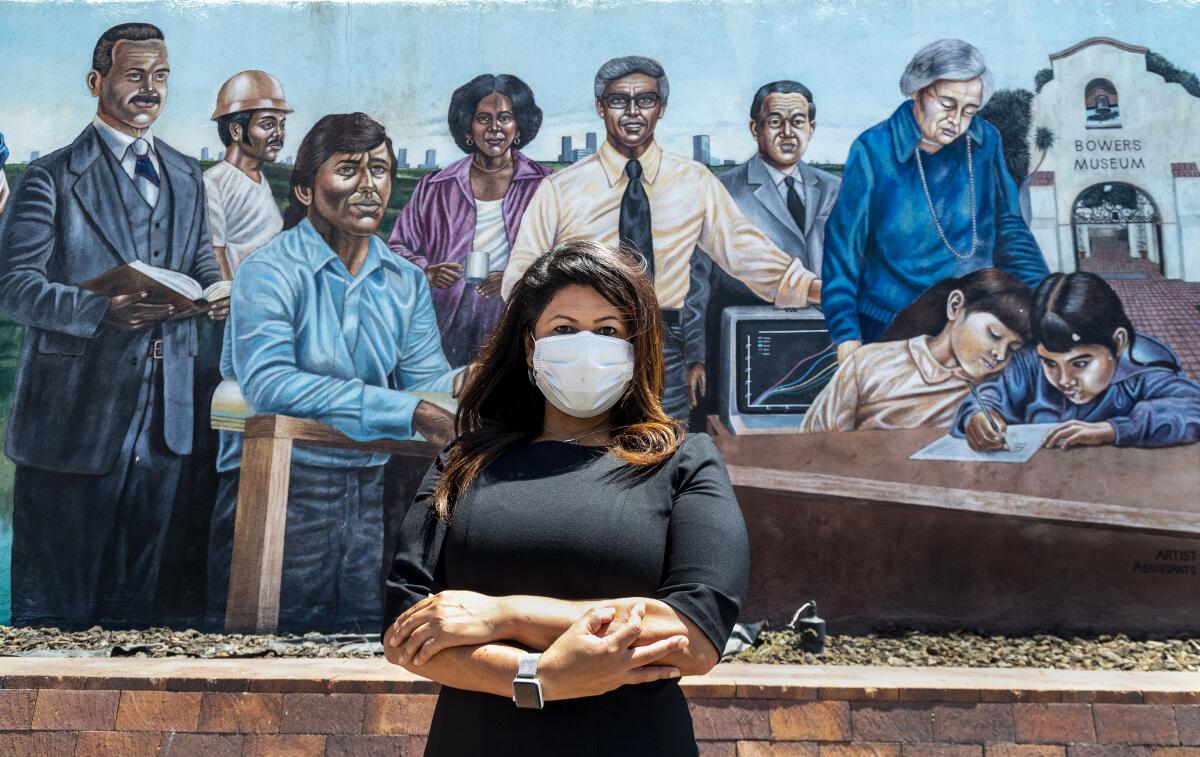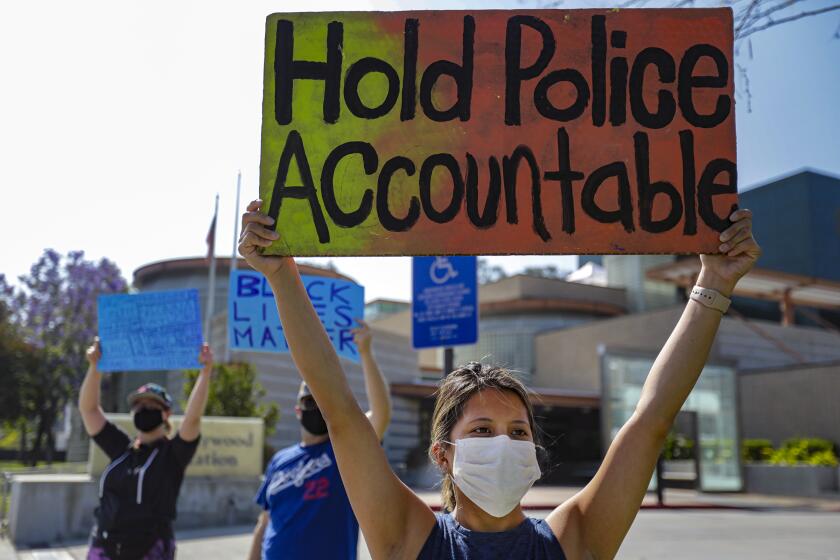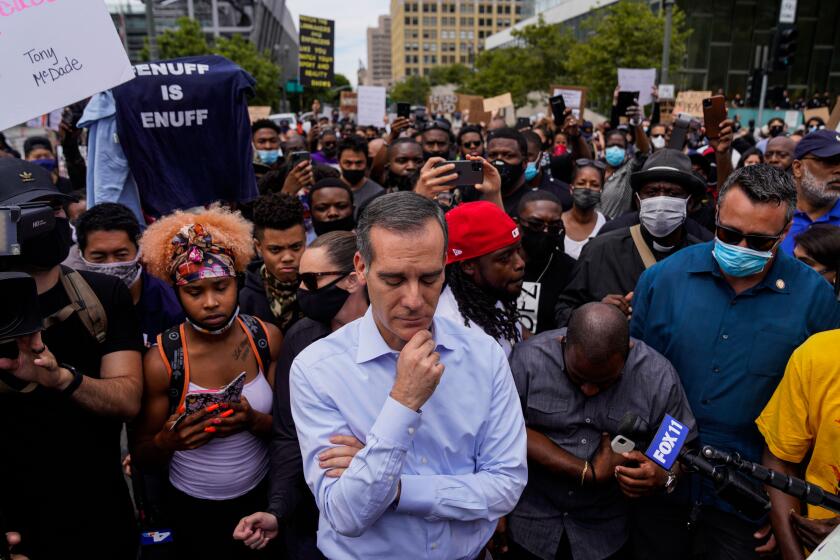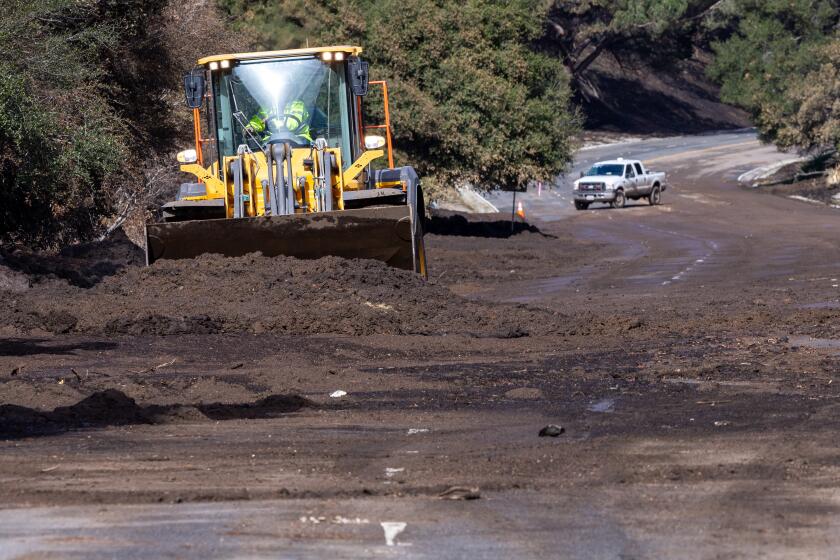Santa Ana embraced a ‘defund the police’ movement. Then came the police union backlash

- Share via
For immigrant rights activist Hairo Cortes, the Santa Ana jail stood as a monument to oppression.
In a city with a large Latino population, elected leaders had turned it into a detention center for immigrants in the country illegally. The jail became a rallying cry for a political reform movement that eventually led the Santa Ana City Council to phase out immigrant detention at the facility, improve police accountability and spend more money on badly needed community services.
In many ways, the effort foreshadowed what is happening in Los Angeles and other cities around the country as protesters call for an end to police brutality and sweeping social reforms.
But Santa Ana offers a cautionary tale for the “defund the police” movement, one that underscores the fragile nature of such reforms even in predominantly working-class, non-white cities. What happened in the short time following activists’ victories, Cortes now says, was a sobering reality check.
The nationwide call to cut police budgets has been fueled by massive street protests against racism and police violence — a historic reckoning prompted by the death of George Floyd, a Black man, under the knee of a white Minneapolis police officer. The city of Los Angeles has voted to slash its police budget by $150 million, taking the force to under 10,000 officers, a staffing figure that had been the goal of city leaders for decades. And Minneapolis has started the process of dismantling its police department altogether.
Among the failed measures was a law that would have required fellow officers to intervene when they witness excessive force.
“It’s like deja vu,” former Santa Ana Councilwoman Michele Martinez said of the mood this summer.
The seeds of political revolution in the Orange County city sprouted nearly a decade ago — nurtured primarily by a generation of young immigrants who lacked legal status but were able to attend college when a change in California law allowed them pay in-state tuition.
While at Santa Ana College, Cortes joined an immigrants rights group and helped organize a 2014 sit-in at the Washington D.C. office of then-Rep. Loretta Sanchez (D-Santa Ana), demanding she ask President Obama to halt deportations.
In Santa Ana, Cortes and his colleagues sought to raise awareness about the city’s jail contract with U.S. Immigration and Customs Enforcement. The issue caught fire with residents who had never before engaged their city government.
“For people who were hearing that the city had a detention center, it was like, ‘Why? How?’” said the 27-year-old Cortes, who came to the U.S. from Mexico when he was 7.
At the same time, a generation of immigrants was finding its political voice, the California Endowment — a nonprofit foundation dedicated to improving public health — was working to address stark inequalities in the city.
The foundation focused on an area that encompassed about 91,000 residents and found that 42% of the adults in Santa Ana lacked health insurance. Generally, people faced hurdles to accessing healthy food, housing and education. Activists sponsored by the project were organizing residents to lobby the city council for more park land, city-funded market spaces for Latino merchants, neighborhood micro-farms and developments with more affordable housing.
Over the years they marked several achievements. The council voted to build a community center close to downtown, increase overall park space in the city and create a fund to provide legal services to immigrants, as well as enact government transparency measures in a new city law dubbed the “sunshine ordinance.”
But the watershed moment for activists was the end of the contract with ICE to hold detainees at the city jail.
In 2006, following a precipitous drop in crime, city leaders entered into a contract with ICE to house immigrants facing possible deportation. A decade later, according to a city staff report, the jail held 239 detainees for ICE.
It became a flashpoint in the struggle for political influence between the Santa Ana Police Officers Assn. — intent on preserving the jobs of dozens of correctional officers — and activists.
Amid intense lobbying from activists, the council in February 2016 backtracked on a proposal to expand the number of beds available to ICE for transgender detainees and instead directed the city manager to find ways to pay the jail debt without revenue from the contract.
Activists celebrated the victory on the steps of city hall, and planned their next move — calling on the council to terminate the contract ahead of its 2020 expiration date.
“It felt like a big win,” Cortes said.
The police budget continued to grow year-over-year, which included previously negotiated raises for officers, but council members rejected union requests for more generous pay increases. Martinez, who served on the council from 2006 until she was termed out in 2018, recalled that she and her colleagues were motivated by the demands of activists to fund other community improvements.
The council also backed a police chief who was cracking down on officer misconduct.
Among the police ranks, resentment was growing.
Santa Ana officers installed a new union president, Gerry Serrano, a no-nonsense cop who accused the council of ignoring the city’s “silent majority.”
In the November 2016 election, the union’s political action committee spent more than $400,000, public filings show. The election came as the city was experiencing a surge in shootings. Santa Ana saw 23 homicides that year, nearly double the previous year.
“Violent crime was up. Shootings were up. And the council majority was tone deaf to it,” Serrano said.
Even with budget cuts, police spending in Los Angeles will reach about $3 billion a year. How did the LAPD come to consume to much of the city’s ‘unrestricted’ money?
Voters elected two new council members supported by the union, Juan Villegas and Jose Solorio, and reelected longtime Mayor Miguel Pulido, who was also backed by the officers association.
A few months after the new council was installed, Police Chief Carlos Rojas resigned. He filed a lawsuit claiming that Serrano had made offers — campaign support in exchange for backing his firing — that at least one councilman considered to be attempted bribery. The city, which denied the allegations in court filings, settled the suit in 2018 and agreed to pay Rojas $350,000.
In an interview with The Times, Serrano said the suit’s accusations were “political rhetoric” and “pandering to try to delegitimize public safety.”
Despite the election setback, activists celebrated again in late 2016 when the council — galvanized by Donald Trump’s anti-immigrant rhetoric during his presidential campaign — voted to push forward with ending the ICE contract by reducing the number of beds available to the agency. Afterward, ICE voluntarily terminated its contract.
In 2018, the police union political action committee again spent heavily to help elect two more council members, cementing the union’s influence at City Hall.
Shortly after, the new council granted officers a generous package of raises. The police department, after years of reductions, went on a hiring spree, adding 50 officers.
This year, the officers union spent heavily on a special election that successfully recalled Councilwoman Cecilia Iglesias, who had voted against across the board raises for police.
Today, city leaders backed by the police union note that killings and other violent crimes have dropped since 2016 and officers are responding to 911 calls faster.
“We have a lot to be proud of in achieving our goal of making Santa Ana a safer community,” Solorio said.
Some of the activists’ past accomplishments have survived the reform backlash.
The city has more park space than it did a decade ago. The community center remains open. Artists have started moving into an affordable housing complex.
But there’s a sense among activists that progress has been halted — and a realization that electing allies to the council is central to cementing long-term change.
“The main lesson is that our community needs to build strong political power,” said Carlos Perea, an immigrant rights activist.
Cortes runs a nonprofit, CHISPA, dedicated to helping Latinos engage in the political process. At least one candidate who activists supported won in a recent school board election, but their favored candidates have yet to win a city council seat.
At a meeting in July, the council majority scrapped a plan to slash the city fund for legal services. But they also rebuffed activists’ calls to cut the police budget — deciding instead to increase police funding by another $3 million.
More to Read
Sign up for Essential California
The most important California stories and recommendations in your inbox every morning.
You may occasionally receive promotional content from the Los Angeles Times.













